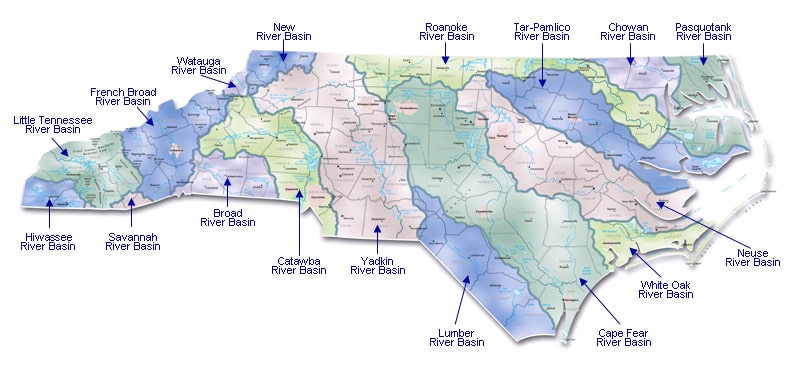Did You Know?
The Southern Appalachians of Western North Carolina are home to some of the last remaining remnants of expansive wild and natural areas in the Southeast. This makes the thousands of miles of rivers, creeks, and streams residing within them some of the cleanest sources of water found anywhere in the world. Ten principle watersheds are found within our mountains that serve as a vital source of pure water for wildlife, plants, and millions of people both within Western North Carolina and hundreds of miles downstream. Our watersheds serve as the water sources for cities like Knoxville, Charleston, Savannah, and New Orleans to name a few. The New, Watauga, Nolichucky, French Broad, Little Tennessee, and Hiwassee River Systems all flow into the Mississippi River and then into the Gulf of Mexico. The Yadkin, Catawba, Savannah, and Broad River Systems all flow directly into the Atlantic. Regardless of where they end up: all of our streams and rivers within these watersheds are critically important for both wildlife and human health.

The Effects Of Trash In Rivers
Plastic pollution is generally broken down into two forms: macro plastics and micro plastics. Macro plastics are generally over 5mm in length and are easily seen with the naked eye. Micro plastics form as larger pieces break down within the environment into smaller pieces while still maintaining their original chemical composition. Macro plastics left in the environment form into micro plastics overtime due to breakdown caused by weathering, mechanical forces, and UV radiation from sunlight.
What makes plastics so deadly for aquatic organisms is how easily it is ingested, and both the immediate and prolonged effects afterwards. Microplastics in particular are very easily ingested by aquatic animals. Because of their small size (less than 5mm) aquatic animals can easily mistake pieces of plastic for potential sources of food. If a smaller fish is then eaten by a larger fish, then the larger fish eaten by an animal such as an otter or bald eagle: it then spreads the toxicity of these plastics throughout the entire food chain due to a process called biomagnification.
Since plastics maintain their chemical configuration, they can transfer toxins into bodily systems of organisms which can lead to a myriad of different effects:
- Hormonal/ endocrine disruption (some studies have indicated that certain chemical compounds used to make plastic mimic reproductive hormones in aquatic organisms, particularly amphibians).
- Clogging of digestive systems.
- Increased toxin absorption in higher levels of the food chain.
- Complete inability of organisms to reproduce.
- Collapse of complex aquatic ecosystems.
What all of this also means, is that humans may also be potentially exposed to the same effects of plastic pollution at a greater degree than one might realize. We rely heavily on our watershed, being the source of freshwater for millions of people both in the mountains and miles downstream. Eating freshwater fish, or simply drinking water from heavily compromised river systems would potentially result in countless numbers of individuals intaking chemical compounds into their bodies. Some studies have linked chemical compounds found in plastic such as PVC and BPA to cancer and reproductive issues in humans.
SAARPC was founded with a dedication to educate those that live within our watershed to these threats to ecological and human health. Through data collection and public awareness, we hope that these issues can stem the tide of pollution so that our watersheds remain a pure source of clean water for both people and wildlife for generations to come.
